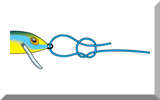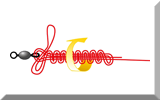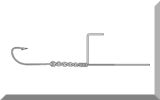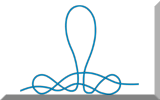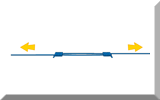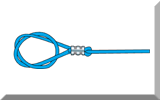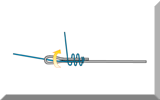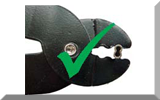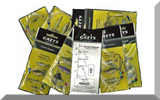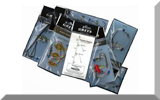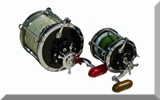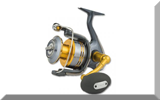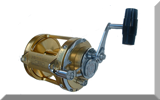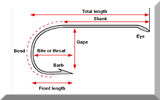The Best Knots for Tying Fishing Hooks to Your Line
|
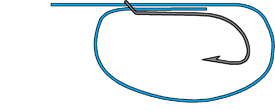 Stage 1 |
First, pass the line through the hook?s eye twice,as shown here. Note the loop hanging under the hook. |
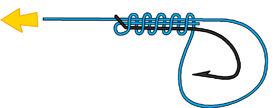 Stage 2 |
Then, take the loop and wind it around the hook?s shank and both lines. Make 5 or so turns for heavy lines, perhaps 10 for the lightest. To tighten the knot, grip the turns between thumb and forefinger and pull the line in the direction of the arrow. |
The hook shown here has a turned-up eye, but had it been turned-down the process would have been exactly the same.
Tying Fishing Hooks with
Straight Eyes
Straight-eyed hooks can be attached to any type of line, but each type requires its own method. For example ...
The Uni-Knot, for Mono and Fluorocarbon Lines
 Stage 1 |
First, pass a line through the eye of the hook and form a loop as shown here. |
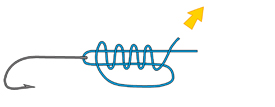 Stage 2 |
Now make at least four turns (more for light lines) around both strands and through the loop. Wet the knot with saliva and start tightening it by first pulling on the tag end in the direction of the arrow. |
 Stage 3 |
Then, with the knot now well consolidated, snip the end off close and pull on the line to slide it down towards the hook. |
 Stage 4 |
And that's it, the finished knot, as it's tied for attaching the line to swivels, hooks and lures. |
The Haywire Twist, for Single-Strand Wire Lines
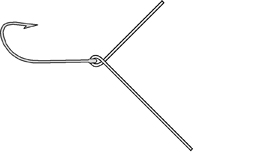 Stage 1 |
First, pass about 4 inches (100mm) of wire through the eye of the hook and carefully fold back so that it crosses the standing part. |
 Stage 2 |
Next, start twisting the wire evenly so each strand turns around the other. The hook can be swiveled 90 degrees to give some leverage. |
 Stage 3 |
Then, after half a dozen twists, bend the tag end upwards so it's perpendicular to the standing part and .... |
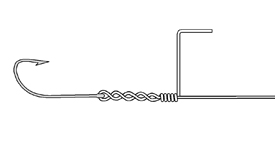 Stage 4 |
Finally, add half a dozen turns of 'barrel wraps'. Don't snip off the tag end with pliers or it will leave a sharp spur. Instead, bend the end to form a small crank handle, and then twist it back and forth until it snaps, and you've done it
|
For all other types of wire, plastic-coated multi-strand wire, and uncoated wire cable - forming a crimped connection is your only option.
Similarly, if your mono is too thick (80lb+) for knots, then crimping is the way to go.
